 Image search results - "Kushiro" Image search results - "Kushiro" |
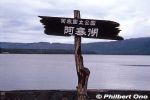
Part of Akan-Mashu National Park, Lake Akan (Akanko) is a serene crater lake in Hokkaido. In winter, the entire lake freezes over to enable ice skating and other winter sports. Winter festival is also held.
|
|
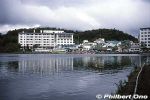
On the southern shore is Akanko Onsen hot spring with hotels and inns. Boat cruises also operate. These photos were taken years ago, so a few buildings might look different today. 阿寒湖温泉
|
|

Lake Akan's average air temperature is a low 3.7˚C. Winter temps can go as low as -17˚C. In summer, it can be as warm as 16˚C or 17˚C.
|
|

Lake Akan at sunset.
|
|

Lake Akan at sunset.
|
|

Akan-Kohan Youth Hostel was once here too. Not here anymore. 阿寒湖畔ユースホステル(既に閉館)
|
|

Bunk beds in Akan-Kohan Youth Hostel. 阿寒湖畔ユースホステル
|
|

Akanko Ainu Kotan is an Ainu village lined with gift shops and Ainu attractions. The path still had dirt when I visited, but it's now completely cobblestones. 阿寒湖アイヌコタン
|
|
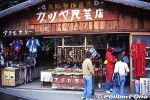
Akanko Ainu Kotan gift shop.
|
|

Akanko Ainu Kotan gifts.
|
|
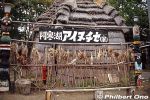
Ainu home (no longer here) was also in the Ainu village. 阿寒湖アイヌコタン
|
|

Akanko Ainu Kotan Ainu village. 阿寒湖アイヌコタン
|
|
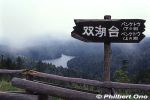
Near Lake Akan are two other small lakes, Lake Penketo (foreground) and Lake Panketo in the rear (not really visible due to fog). From Sokodai Scenic Point. 双湖台、ペンケトー
|
|
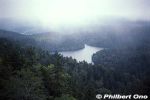
Only part of Lake Penketo can be seen from the road. Part of the Akan Volcanic Complex. ペンケトー
|
|

Lake Penketo's water flows to Panketo and ends up in Lake Akan. ペンケトー
|
|

The ocean seen from the JR Nemuro Line going to Kushiro.
|
|

Kushiro City Red-Crowned Crane Natural Park (Kushiro Japanese Crane Reserve) keeps red-crowned cranes (tancho 丹頂) for the public to see year-round. Kushiro is where the cranes can also be found in the wild.
|
|

Entrance to the park has this sign indicating how many years the park has been operating since Aug. 27, 1958. Visited in 2022, so it was 63 years. It also says the park currently has 14 cranes.
|
|
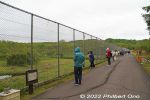
The park basically is marshland with fences keeping the cranes inside. Visitors could walk along the tall fence and see the cranes, usually in pairs.
|
|
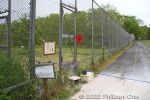
I walked all the way to the end and found this dead-end. This is also a bird sanctuary where they treat injured cranes. The park has done a lot to help preserve and multiply the cranes.
|
|
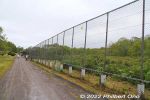
Walked back and checked every crane on display.
|
|
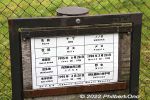
The cages also have signs indicating the names, birthdates, and birthplaces of the paired cranes.
|
|
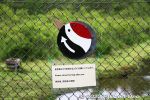
The fence also has a covered hole for taking pictures.
|
|
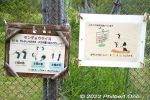
The fence also has quiz questions like "What's the difference between the male and female crane?" The answer is behind the sign.
|
|
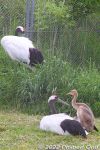
At Kushiro City Red-Crowned Crane Natural Park, we also saw a baby crane, about a month old. (Born in mid-May 2022.) Here he/she is with dad and mom
|
|
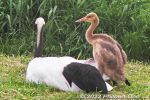
At Kushiro City Red-Crowned Crane Natural Park, baby red-crowned crane in mid-June 2022. That's the mother on the left.
|
|
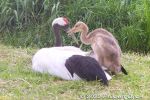
At Kushiro City Red-Crowned Crane Natural Park, baby red-crowned crane. You can see baby cranes at the park from April to June.
|
|
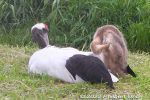
At Kushiro City Red-Crowned Crane Natural Park, baby red-crowned crane in mid-June 2022.
|
|
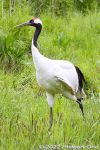
Red-crowned crane, Kushiro City Red-Crowned Crane Natural Park, Hokkaido.
|
|
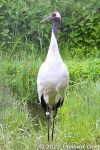
Red-crowned crane, Kushiro City Red-Crowned Crane Natural Park, Hokkaido.
|
|
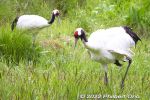
Red-crowned cranes, Kushiro City Red-Crowned Crane Natural Park, Hokkaido.
|
|
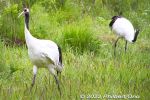
Red-crowned cranes, Kushiro City Red-Crowned Crane Natural Park (Kushiro Japanese Crane Reserve).
|
|
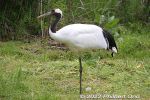
Red-crowned crane, Kushiro City Red-Crowned Crane Natural Park (Kushiro Japanese Crane Reserve).
|
|
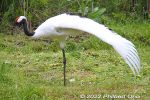
Red-crowned crane, Kushiro City Red-Crowned Crane Natural Park (Kushiro Japanese Crane Reserve).
|
|
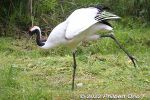
Red-crowned crane, Kushiro City Red-Crowned Crane Natural Park (Kushiro Japanese Crane Reserve).
|
|
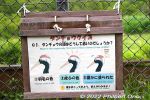
"Why do they have a red crown?"
|
|
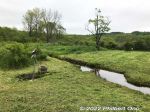
Kushiro Japanese Crane Reserve
|
|
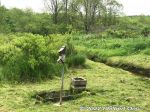
Kushiro Japanese Crane Reserve crane feeder. They also feed the cranes in the morning. It would be neat to see if you're there.
|
|
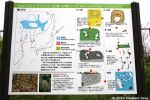
Life cycle of Japanese red-crowned cranes. For wildlife photographers, the most popular time is Jan.-March in winter when the cranes dance in the snow for their mating ritual.Asian mainland has about 1,600 red-crowned cranes, and Japan (eastern Hokkaido) has 1,200 cranes.
|
|
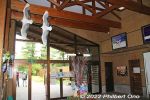
The park also has a small crane museum.
|
|
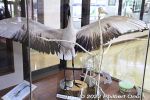
Crane skeleton.
|
|
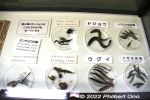
What cranes eat. Small fish, insects, and more.
|
|

Baby cranes grow very quickly. Left one is 39 days old, middle is 5 days old. They reach adult size in 3 months. Their brown feathers also turn black and white.
|
|
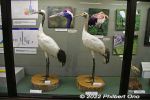
Adult males, fully grown on the left and 6 months old on the right still with brown feathers.
|
|
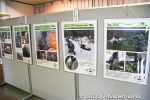
Panel displays explaining about the cranes and problems.
|
|
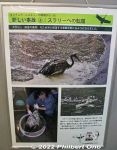
Cleaning up a crane that fell into a slurry pool.
|
|
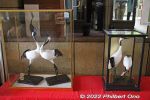
Crane dolls.
|
|
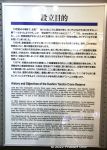
About the Kushiro Japanese Red-Crowned Crane Reserve.
|
|

History of the Kushiro Japanese Crane Reserve.
|
|
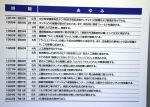
History of the Kushiro Japanese Crane Reserve in Japanese.
|
|
|
|
|
|

















































